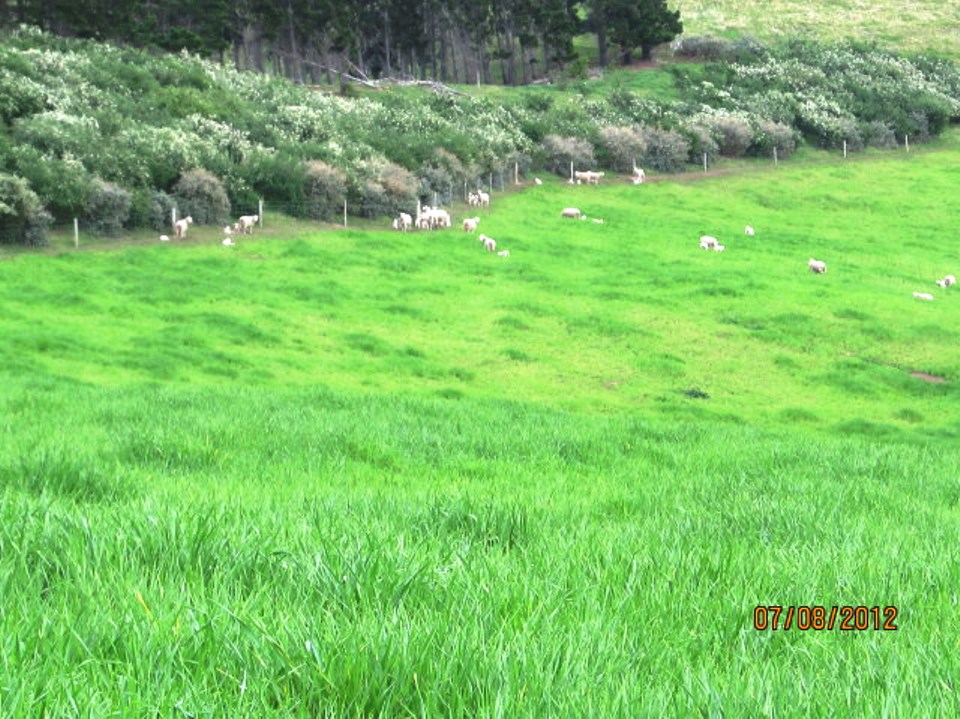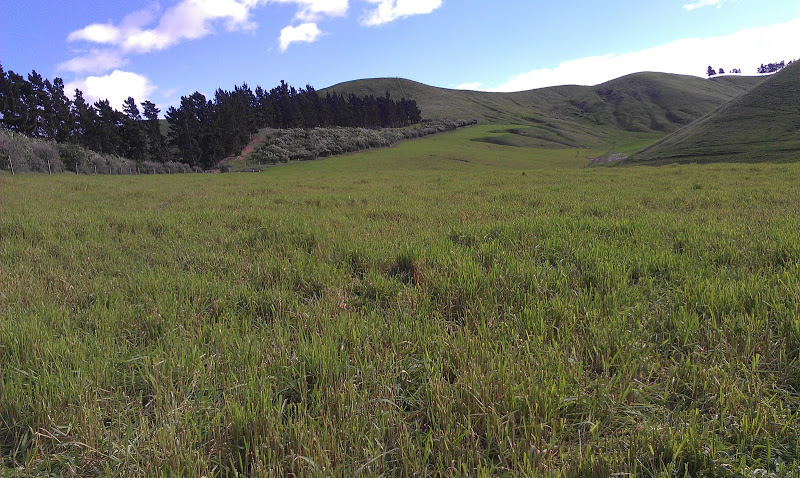Omaka Barley is a great crop to use at Bonavaree. Barley is used here because it really fits in well with the Avery’s system. The Omaka variety has been bred locally, and is very suitable for reliable dry matter production in a Marlborough dryland environment.
It is a multipurpose crop at Bonavaree, in that it is used as a green feed crop, and as a break crop. The Omaka is grazed multiple times from March till the end of August. Dry matter production is usually between 6-8 T/ha, and is grazed by both cattle and sheep.
Omaka Barley is also used regularly at Bonavaree for the purpose of breaking weed/pest cycles, and increasing base soil fertility in preparation for sowing lucerne, or a Bonavaree mix. Barley is used as the 2nd break crop in a multi stage lucerne renovation system that has been working very well. The 1st break crop used is an Annual Ryegrass that is grazed by multiple bearing ewes at lambing, and prime bull beef production. We will be following the progress of this renovation system through, with regular updates.
Some paddocks are used to grow Omaka Barley for two consecutive years, but because of the Avery’s wider interest in establishing paddocks with Lucerne, barley is normally used as a 2nd break crop in the renovation process.
I have visited this paddock a couple of times, you can see by the photo above that the paddock is starting to show signs of running out, there are urine patches showing up, the vegetation is starting to yellow, and the regrowth after grazing has also slowed. Although there is still a good amount of good quality feed available to the lambing ewes grazing this paddock at the moment. This photo was taken on 7th August. You can also see in the background that both ewes and lambs are making full use of the shelter provided by the Pines and Tree Lucerne/Salt Bush plantings.
The next visit occurred a couple of weeks later (photo above); the ewes and lambs had been taken off, and the paddock has been grazed to a height of approximately 15-20 cm. This paddock will be shut up for a period of time, and then R2 bulls or steers will be brought in from the hill blocks, and will be finished on the improved country at Bonavaree. Lucerne is also used to finish cattle, with the use of bloat capsules. Cattle finishing is an integral part of this cropping/pasture renovation process.
This is why this crop is such a winner within the Avery’s system, it has done it’s job by producing good quality forage for many grazing animals, and has started to shut down and stop production at a time when Doug and Fraser are initiating their paddock renovation plans. This paddock will be sprayed out next month, with plans to drill in early October.
Doug and Fraser go through a regular planning process of what feed is required for the next season, and into next year. The emphasis is on feeding stock really well throughout the year. Impressive production gains are evident in their system, and is testament to a good deal of forward planning, and timely implementation of these plans. Doug says “now at Bonavaree, and soon further south, is the time to start planning for next year’s lambing feed”. It’s time to work out and identify which paddocks will go into break crops in preparation to establish permanent lucerne or mixed lucerne stands. This, at Bonavaree, is usually a 3 year process, there are no shortcuts here! “No paddock goes into Lucerne until weeds are dealt to, even if it takes another year”.
The use of summer fallowing is also incredibly important to the success of lucerne establishment…more on that in later blogs.

